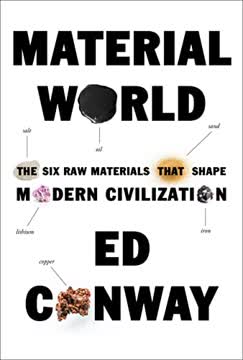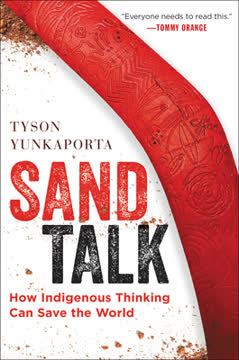نکات کلیدی
1. اقیانوس جهانی: ویژگی غالب زمین و سیستم پشتیبانی حیات
چقدر نامناسب است که این سیاره را زمین بنامیم، در حالی که به وضوح اقیانوس است.
وسیع و به هم پیوسته. اقیانوس جهانی 71 درصد از سطح زمین را پوشش میدهد و عمق متوسط آن 3682 متر است. این اقیانوس 97 درصد از آب سیاره را در خود جای داده و به پنج اقیانوس منطقهای تقسیم میشود: اقیانوس آرام، اقیانوس اطلس، اقیانوس هند، اقیانوس قطبی و اقیانوس جنوبی.
نقش حیاتبخش. اقیانوس نیمی از اکسیژن مورد نیاز ما را تولید میکند، اقلیم ما را تثبیت میکند، اکوسیستمهای ساحلی را حفظ میکند، غذا فراهم میآورد، میزبان موجودات متنوعی برای پزشکی و بیوتکنولوژی است و از تفریح و گردشگری حمایت میکند. اقتصاددانان ارزش سالانه خدمات اقیانوس را 2.5 تریلیون دلار آمریکا تخمین میزنند و مجموع داراییهای آن به 24 تریلیون دلار میرسد.
در معرض تهدید. فعالیتهای انسانی، از جمله صید بیش از حد، تخریب زیستگاه، آلودگی، گونههای مهاجم و انتشار گازهای گلخانهای، تغییرات و آسیبهای قابل توجهی به اکوسیستمهای اقیانوس وارد میکند. این امر توانایی آنها را در ارائه سیستمها و خدمات ضروری پشتیبانی حیات که رفاه و شکوفایی انسانی را حفظ میکند، تضعیف میکند.
2. میکروبهای دریایی: موتورهای نامرئی تولیدات اقیانوس
اگر وزن تمام میکروبهای موجود در اقیانوسها را جمع کنیم، بیش از دو سوم از کل بیومس زنده دریایی را تشکیل میدهد.
تنوع میکروبی. میکروبیوم دریایی شامل چهار گروه اصلی است: باکتریها، آرکئا، پروتیستها و ویروسها. این میکروارگانیسمها به طرز شگفتانگیزی فراوان هستند و باکتریها در غلظتهای یک میلیارد یا بیشتر در هر لیتر آب دریا وجود دارند.
تولید اولیه. میکروبهای فیتوپلانکتون در لایه سطحی آفتابی اقیانوسها تقریباً تمام تولید اولیه در محیطهای دریایی را بر عهده دارند. بازیگران کلیدی شامل:
- سیانوباکتریها مانند پروکلروکوکوس
- دیاتومها
- دینوفلاژلاتها
- کوکولیتوفورها
جریان انرژی کارآمد. میکروبهای دریایی پایه زنجیره غذایی اقیانوس را تشکیل میدهند و انرژی از طریق مسیرهای مختلف منتقل میشود:
- زنجیره غذایی کلاسیک: فیتوپلانکتون → زوپلانکتون → ماهی → شکارچیان برتر
- حلقه میکروبی: DOM/POM → باکتریها/آرکئا → پروتیستها → زوپلانکتون
- حلقه ویروسی: چرخه سریع بین DOM/POM و میکروبها، که توسط فاژها میانجیگری میشود.
3. اکوسیستمهای ساحلی: زیستگاههای حیاتی تحت فشار انسانی
در حال حاضر، تقریباً 44 درصد از جمعیت انسانی، یا 3.4 میلیارد نفر، در کنار سواحل زندگی میکنند یا در فاصله 150 کیلومتری از سواحل قرار دارند.
زیستگاههای متنوع. اکوسیستمهای ساحلی شامل:
- بسترهای کِلپ
- مراتع علف دریایی
- جوامع بستر نرم
- مصبها و مانگروها
تأثیرات انسانی. این اکوسیستمها با تهدیدات متعددی مواجه هستند:
- آلودگی (صنعتی، کشاورزی، فاضلاب، پلاستیک)
- صید بیش از حد
- تخریب زیستگاه
- گونههای مهاجم
- اثرات تغییرات اقلیمی (گرمایش، اسیدی شدن)
چالشهای حفاظت. تلاشها برای حفاظت از اکوسیستمهای ساحلی شامل:
- ایجاد مناطق حفاظتشده دریایی
- کاهش آلودگی و زبالههای پلاستیکی
- اجرای شیوههای صید پایدار
- احیای زیستگاههای آسیبدیده
- کنترل گونههای مهاجم
4. اقیانوسهای قطبی: محیطهای منحصر به فرد در حال تغییر سریع
به وضوح، اقیانوس قطبی که ما آن را میشناختیم در حال ناپدید شدن است و تأثیرات عمیقی بر زیستشناسی دریایی آن خواهد داشت.
اقیانوس قطبی در مقابل اقیانوس جنوبگان. اقیانوسهای قطبی ویژگیهای متمایزی دارند:
- قطب شمال: محصور در خشکی، قفسههای کم عمق، پوشش یخ فصلی
- قطب جنوب: باز به سایر اقیانوسها، قفسه قارهای شیبدار، یخ دریا فصلی
اکوسیستمهای یخ دریایی. هر دو منطقه قطبی دارای جوامع منحصر به فردی هستند که به یخ دریایی سازگار شدهاند:
- میکروبهایی که در کانالهای نمکی زندگی میکنند
- جلبکهای یخی که سطوح تروفیک بالاتر را حمایت میکنند
- حیوانات خاصی مانند خرسهای قطبی (قطب شمال) و پنگوئنها (قطب جنوب)
تأثیرات تغییرات اقلیمی. مناطق قطبی سریعتر از میانگین جهانی گرم میشوند که منجر به:
- از دست دادن سریع یخ دریا، به ویژه در قطب شمال
- تغییر در الگوهای تولید اولیه
- تغییر در توزیع گونهها
- پتانسیل برای فعالیتهای تجاری جدید (صید، حمل و نقل)
5. صخرههای مرجانی: اکوسیستمهای متنوع در تعادل ظریف
این «جنگلهای بارانی اقیانوس» سیستمهای بسیار پیچیدهای هستند که میزبان تنوع شگفتانگیزی از موجودات دریایی—یک چهارم تا یک سوم از تمام گونههای دریایی—هستند و تعداد گونههای مختلف در صخرههای مرجانی در سطح جهانی به میلیونها میرسد.
پایه همزیستی. صخرههای مرجانی بر اساس رابطه همزیستی بین مرجانها و زوگزانتلا ساخته شدهاند:
- مرجانها پناهگاه و مواد مغذی را برای زوگزانتلا فراهم میکنند
- زوگزانتلا تا 95 درصد از نیازهای انرژی مرجانها را از طریق فتوسنتز تأمین میکند
خدمات اکوسیستمی. صخرههای مرجانی مزایای متعددی ارائه میدهند:
- زیستگاه برای زندگی دریایی متنوع
- منبع غذایی برای میلیونها نفر
- حفاظت ساحلی در برابر طوفانها
- فرصتهای گردشگری و تفریحی
تهدیدات و حفاظت. صخرههای مرجانی با چندین فشار مواجه هستند:
- گرمایش و اسیدی شدن اقیانوس
- آلودگی و رسوبگذاری
- صید بیش از حد و شیوههای صید مخرب
- توسعه سواحل
تلاشهای حفاظتی بر کاهش فشارهای محلی و حفاظت از سیستمهای صخرهای از طریق مناطق حفاظتشده دریایی و شیوههای مدیریت پایدار متمرکز است.
6. گردش اقیانوس: محرک اقلیم و حیات دریایی
نوار اقیانوس بزرگ با سرعتی بسیار کندتر از جریانهای سطحی ناشی از باد حرکت میکند—چند سانتیمتر در ثانیه—اما حجمهای عظیمی از آب را جابجا میکند—بیش از صد برابر جریان رود آمازون.
جریانهای سطحی. گردابهای ناشی از باد در هر حوضه اقیانوسی آب را به صورت افقی حرکت میدهند و گرما، مواد مغذی و موجودات را منتقل میکنند.
گردش ترموهالین. جریانهای عمیق اقیانوس به وسیله تفاوتهای دما و شوری هدایت میشوند:
- آب سرد و متراکم در عرضهای جغرافیایی بالا غرق میشود
- بالا آمدن آب مواد مغذی را در برخی مناطق به سطح میآورد
- نوار جهانی تمام حوضههای اقیانوسی را در یک چرخه تقریباً 1000 ساله متصل میکند
تنظیم اقلیم. گردش اقیانوس نقش حیاتی در:
- توزیع گرما در سراسر سیاره
- جذب و ذخیره دیاکسید کربن جو
- تأثیر بر الگوهای آب و هوایی و اقلیم ایفا میکند
تأثیرات اکولوژیکی. تغییرات در گردش اقیانوس به دلیل تغییرات اقلیمی میتواند تأثیرات دوربردی بر اکوسیستمهای دریایی و الگوهای اقلیمی جهانی داشته باشد.
7. تأثیرات انسانی: تهدیدات و چالشهای حفاظت برای اکوسیستمهای دریایی
متأسفانه، فعالیتهای انسانی سالهاست که بر اقیانوسها تأثیر گذاشته است. اکنون واضح است که صید بیش از حد، تخریب زیستگاه، آلودگی، گسترش گونههای غیر بومی و انتشار گازهای گلخانهای تغییرات اقلیمی، تغییرات و آسیبهای قابل توجهی به اقیانوسها و موجودات زنده درون آنها وارد میکند.
تهدیدات عمده:
- صید بیش از حد و شیوههای صید مخرب
- آلودگی (پلاستیک، شیمیایی، مواد مغذی)
- تغییرات اقلیمی (گرمایش، اسیدی شدن، کمبود اکسیژن)
- تخریب زیستگاه (توسعه سواحل، صید کف)
- گونههای مهاجم
رویکردهای حفاظتی:
- ایجاد مناطق حفاظتشده دریایی
- اجرای شیوههای صید پایدار
- کاهش آلودگی و زبالههای پلاستیکی
- کاهش تأثیرات تغییرات اقلیمی
- احیای زیستگاههای آسیبدیده
- کنترل گونههای مهاجم
چشمانداز آینده. سلامت اکوسیستمهای دریایی برای رفاه انسانی و ثبات سیارهای حیاتی است. پرداختن به این چالشها نیازمند همکاری جهانی، راهحلهای نوآورانه و تغییر به سمت استفاده پایدار از منابع اقیانوس است. دهههای آینده در تعیین سرنوشت بلندمدت اقیانوسها و زندگیهایی که از آنها حمایت میکنند، حیاتی خواهد بود.
آخرین بهروزرسانی::
FAQ
What is "Marine Biology: A Very Short Introduction" by Philip V. Mladenov about?
- Comprehensive overview: The book provides a concise yet comprehensive introduction to marine biology, covering the oceanic environment, marine life, and the processes that sustain ocean ecosystems.
- Human impact focus: It emphasizes the profound changes humans have brought to the oceans, especially in the Anthropocene era, and discusses the urgent need for sustainable management.
- Structure and scope: The book is organized into chapters that explore ocean environments, biological processes, coastal and deep-sea life, polar and tropical systems, food resources, and the future of the oceans.
- Accessible for all: Written for a general audience, it aims to make marine biology accessible, engaging, and relevant to both students and curious readers.
Why should I read "Marine Biology: A Very Short Introduction" by Philip V. Mladenov?
- Essential for understanding oceans: The book explains why healthy oceans are vital for human survival, climate stability, and biodiversity.
- Up-to-date science: It incorporates the latest research and discoveries in marine biology, including the impacts of climate change and ocean acidification.
- Actionable knowledge: Readers gain insight into the challenges facing marine ecosystems and the actions needed for their protection and restoration.
- Broad appeal: Whether you are a student, educator, policymaker, or ocean enthusiast, the book offers valuable perspectives on the state and future of our oceans.
What are the key takeaways from "Marine Biology: A Very Short Introduction"?
- Oceans are critical: Oceans cover 71% of Earth’s surface, produce half the oxygen we breathe, and regulate climate.
- Human impacts are severe: Overfishing, pollution, habitat destruction, and climate change are rapidly degrading marine ecosystems.
- Marine biodiversity is immense: From microbes to whales, the diversity and adaptations of marine life are extraordinary and essential for ecosystem function.
- Urgent need for action: Sustainable management, marine protected areas, and global cooperation are crucial to restore and protect ocean health for future generations.
How does "Marine Biology: A Very Short Introduction" define and explain the oceanic environment?
- Structure of the oceans: The book details the physical structure of the global ocean, including continental shelves, slopes, abyssal plains, ridges, and trenches.
- Key environmental factors: It explains the importance of salinity, temperature, light, pressure, oxygen, and pH in shaping marine habitats.
- Ocean circulation: Surface currents, gyres, and deep thermohaline circulation (like the Great Ocean Conveyor Belt) are described as drivers of nutrient and heat distribution.
- Human-induced changes: The text highlights how climate change is warming oceans, altering currents, and causing acidification, with significant biological consequences.
What are the main marine biological processes discussed in "Marine Biology: A Very Short Introduction"?
- Microbial dominance: Marine microbes (bacteria, archaea, protists, viruses) are the foundation of oceanic food webs and account for most marine biomass.
- Primary production: Phytoplankton, especially cyanobacteria like Prochlorococcus, drive half of global primary production through photosynthesis.
- Nutrient cycling: The book covers how nutrients like nitrogen, phosphorus, and iron limit or enhance productivity, and discusses phenomena like upwelling and the microbial loop.
- Energy flow: It explains classic and microbial food chains, energy transfer efficiencies, and the unique inverted biomass pyramid of marine systems.
How does "Marine Biology: A Very Short Introduction" describe life in the coastal ocean?
- Diverse habitats: Coastal zones include kelp beds, seagrass meadows, soft-bottom communities, and are among the most productive and biodiverse marine areas.
- Human pressures: Coastal regions face intense impacts from pollution, eutrophication, overfishing, habitat destruction, and invasive species.
- Ecological roles: The book details the importance of keystone species (like sea otters in kelp forests) and the cascading effects of their loss.
- Conservation challenges: It discusses the decline of habitats like seagrass meadows and mangroves, and the need for better management and restoration.
What are the unique features of polar marine biology according to "Marine Biology: A Very Short Introduction"?
- Arctic vs. Antarctic: The Arctic Ocean is landlocked with extensive sea ice and river input, while the Southern Ocean is open, nutrient-rich, and surrounds Antarctica.
- Sea ice ecosystems: Both regions have complex microbial and animal communities living in and under sea ice, supporting unique food webs.
- Keystone species: Antarctic krill and Arctic cod are central to their respective food webs, supporting whales, seals, penguins, and polar bears.
- Climate change impacts: Rapid warming is reducing sea ice, altering productivity, and threatening iconic species and ecosystem stability.
How does "Marine Biology: A Very Short Introduction" explain coral reefs and tropical marine life?
- Coral reef structure: The book explains the biology of reef-building corals, their symbiosis with zooxanthellae, and the formation of atolls, fringing, and barrier reefs.
- Biodiversity hotspots: Coral reefs are described as the "rainforests of the ocean," supporting a quarter to a third of all marine species.
- Threats and resilience: Overfishing, pollution, disease, and especially climate change (bleaching and acidification) are causing rapid reef decline.
- Conservation strategies: The text discusses emerging approaches like identifying climate refugia, assisted gene flow, and active restoration to save coral reefs.
What does "Marine Biology: A Very Short Introduction" reveal about deep-ocean biology?
- Vast, unexplored habitat: The deep ocean (below 500m) makes up 90% of ocean volume but is the least studied environment on Earth.
- Extreme adaptations: Deep-sea organisms have evolved to survive high pressure, cold, darkness, and scarce food, with features like bioluminescence and unique reproductive strategies.
- Chemosynthetic communities: Hydrothermal vents and cold seeps support life based on chemical energy, not sunlight, with remarkable symbioses (e.g., tube worms and bacteria).
- Human impacts: Deep-sea fisheries and potential mining threaten fragile, slow-growing communities like seamount corals and long-lived fish.
How does "Marine Biology: A Very Short Introduction" address food from the oceans and fisheries management?
- Historical overexploitation: The book traces the long history of overfishing, showing that many stocks have been depleted for centuries.
- Modern fishing methods: It explains the impacts of trawling, longlining, and bycatch on marine ecosystems and non-target species.
- Sustainability limits: Global catches have plateaued or declined, with most stocks fully exploited or overfished, and little room for increased wild harvest.
- Solutions: The text advocates for marine protected areas, improved management, consumer awareness, and the role of aquaculture in meeting future food needs.
What future scenarios and solutions for ocean health are proposed in "Marine Biology: A Very Short Introduction"?
- End of wilderness: The book argues that true marine wilderness is nearly gone, with human impacts now global and pervasive.
- Vision for 2050: It outlines a hopeful scenario where international cooperation, better governance, reduced pollution, and expanded marine protected areas restore ocean health.
- Technological advances: Real-time monitoring, improved fisheries management, and new restoration techniques (like gene editing for corals) are highlighted.
- Societal change: The author stresses the importance of public engagement, education, and political will to drive the necessary changes for ocean recovery.
What are the best quotes from "Marine Biology: A Very Short Introduction" by Philip V. Mladenov and what do they mean?
- “How inappropriate to call this planet Earth, when clearly it is Ocean.” — Arthur C. Clarke, quoted to emphasize the dominance and importance of oceans on our planet.
- “The value of healthy, intact ocean ecosystems is thus incalculable—life on Earth as we know it would not exist without them.” — Highlights the essential, irreplaceable services oceans provide to humanity and all life.
- “The challenge for humans now is to find ways to stabilize and prevent the further degradation of marine ecosystems and embark on a path of ocean restoration.” — Calls for urgent action and a shift from conservation to active restoration.
- “The actions humans take in the next few decades will decide the outcome.” — Stresses the critical window of opportunity for reversing ocean decline and ensuring a sustainable future.
نقد و بررسی
کتاب زیستشناسی دریایی: مقدمهای بسیار کوتاه بهخاطر مرور جامع خود از اکوسیستمهای دریایی، تنوع زیستی و چالشهای محیطزیستی بهطور گستردهای مورد تحسین قرار گرفته است. خوانندگان از سبک نوشتاری قابلدسترس، محتوای آموزنده و رویکرد سیستماتیک این کتاب در پوشش جنبههای مختلف حیات دریایی قدردانی میکنند. بسیاری آن را مقدمهای عالی بر این موضوع میدانند و بر توانایی آن در ارائه حجم زیادی از اطلاعات در قالبی مختصر تأکید میکنند. این کتاب بهخاطر افزایش آگاهی درباره تأثیرات انسانی بر اقیانوسها و الهامبخشی برای علاقهمندی بیشتر به زیستشناسی دریایی مورد ستایش قرار گرفته است.
Very Short Introductions Series Series

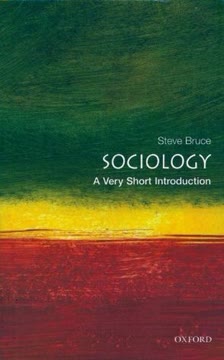
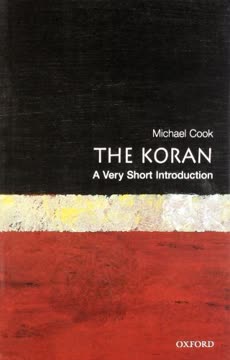






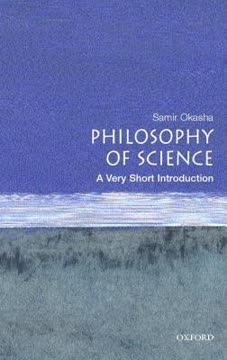
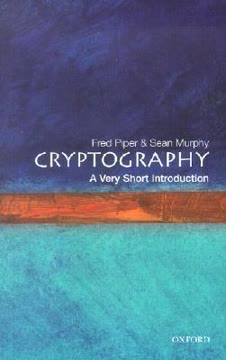

Similar Books
